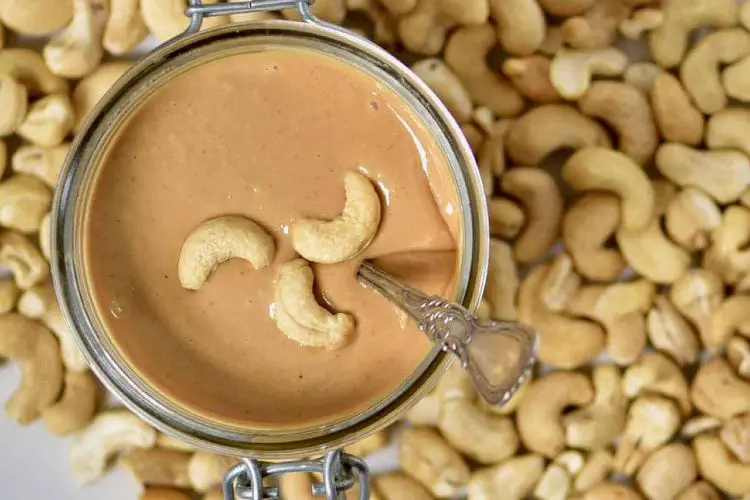What Does Pomegranate Taste Like?
Quick Answer
The taste of a pomegranate is a unique blend of sweet and tart flavors with a hint of astringency. The edible part, known as arils, bursts with juicy sweetness when bitten, followed by a tangy aftertaste. This complex flavor profile is often compared to a mix of berries, citrus fruits, and grapes. The taste can vary depending on the fruit’s ripeness, with fully ripe pomegranates being sweeter and less astringent.
What Is Pomegranate?
The pomegranate is a fruit that originates from the Middle East and North Africa but is now grown in many parts of the world.
The fruit is about the size of an apple and has a tough, leathery skin that can range in color from pink to deep red.
Inside, the pomegranate contains hundreds of small seeds encased in juicy, red sacs called arils.
These arils are the edible part of the fruit and are often consumed fresh or used to make pomegranate juice.
The fruit is rich in antioxidants, vitamins, and minerals, and is celebrated for both its unique flavor and its potential health benefits.
What Does Pomegranate Taste Like?
The flavor of a pomegranate is a captivating blend of sweet, tart, and astringent notes.
Sweet
The sweetness in a pomegranate comes primarily from the juice-filled arils. This sweetness can range from subtle to quite pronounced, depending on the ripeness and variety of the fruit.
The sweet aspect makes pomegranate a delightful addition to desserts and sweet beverages.
Tart
The tartness in pomegranate balances its sweetness, adding a zesty kick that is especially refreshing. This tartness is also what makes pomegranate juice a popular choice for cocktails and other mixed beverages.
It can liven up salads and main courses when used as a garnish or an ingredient in dressings and sauces.
Astringent
Pomegranates have a slightly astringent quality, especially if they are not fully ripe.
This astringency can leave your mouth feeling a bit dry but is often seen as a complement to the fruit’s sweetness and tartness, adding complexity to its overall flavor profile.
Comparison to Other Fruits
- Berries: Like many berries, pomegranates have a balance of sweet and tart flavors, but they are generally more astringent.
- Citrus: Citrus fruits like oranges and lemons also offer a balance of sweetness and tartness but lack the astringent quality of pomegranates.
- Grapes: Red grapes may come closest in texture to pomegranate arils, and both can be sweet, but grapes typically lack the tart and astringent notes that define pomegranate’s flavor profile.
FAQs
Do All Pomegranates Taste The Same?
No, the taste can vary depending on factors like ripeness and variety. Some pomegranates are sweeter, while others are more tart or astringent.
Is The Whole Pomegranate Fruit Edible?
Only the arils, which are the juice-filled sacs surrounding the seeds, are edible. The outer skin and the white pith are inedible and are usually discarded.
What Does Pomegranate Juice Taste Like?
Pomegranate juice is a concentrated burst of the fruit’s distinct flavor, capturing its sweet and tart elements in liquid form. The juice is often less astringent than consuming the whole arils, as the astringency is largely in the membranes that get left behind during the juicing process.
Pomegranate juice is deeply refreshing and can range from mildly sweet to strikingly tart. Its intense flavor makes it popular in cocktails, smoothies, and as a stand-alone beverage. Some people even dilute it with water or other fruit juices to moderate the taste.
Do Pomegranate Seeds Taste Sweet Or Bitter?
The seeds inside the pomegranate’s arils are generally not bitter; they have a slightly nutty and neutral taste. When you bite into an aril, most of what you taste comes from the juicy sac surrounding the seed, which is sweet and tart.
The seed itself provides a contrasting crunch but doesn’t have a strong flavor. Some people enjoy the seeds for their textural element, while others prefer to spit them out.
How To Deseed Pomegranate Easily?
Deseeding a pomegranate doesn’t have to be a complicated process. Here’s an easy method:
- Cut Off the Crown: Remove the top part of the pomegranate where it forms a crown-like shape.
- Score the Skin: With a knife, make shallow cuts along the natural ridges of the pomegranate. Usually, there are five to six sections.
- Open the Sections: Gently pull apart the pomegranate into its natural sections. This should expose the arils.
- Remove Arils Over a Bowl: Hold each section over a bowl and tap the skin side with a wooden spoon. This should release most of the arils into the bowl.
- Final Clean-Up: Remove any remaining pith or membrane from the bowl of arils.
Can The Taste Of Pomegranate Be Altered When Cooked Or Baked?
Yes, cooking or baking can intensify the sweetness of pomegranate while reducing its tartness. It is commonly used in sauces, baked goods, and warm dishes.
Can You Eat Pomegranate Seeds?
Eating pomegranate seeds is a matter of personal preference. The seeds are edible and provide a source of dietary fiber. Their texture is somewhat crunchy and their flavor is mild and nutty, serving mostly as a counterpoint to the juicy, flavorful arils surrounding them.
Some people enjoy the added crunch that the seeds offer, while others prefer to enjoy only the juice-filled arils and spit out the seeds. There is no right or wrong way to eat them-it’s all up to your personal taste and texture preferences.
How Does Pomegranate Juice Taste Compared To The Fresh Fruit?
Pomegranate juice typically captures the sweet and tart elements of the fruit but may lack some of the astringent qualities. The juice is often more concentrated and can be diluted to adjust the taste.
What Foods Pair Well With The Taste Of Pomegranate?
Pomegranate pairs well with a variety of foods, including salads, meats like lamb and duck, and even desserts like ice cream and cakes. Its unique flavor complements both sweet and savory dishes.
Is Pomegranate Taste Acquired?
While many people enjoy pomegranate the first time they try it, others may need time to get used to its complex flavor profile, particularly the astringent notes.
How Can I Tell If A Pomegranate Will Be Sweet Or Tart?
Generally, a ripe pomegranate will be sweeter. Look for fruits that are heavy for their size and have a rich color; these are usually indicators of ripeness and sweeter taste.




